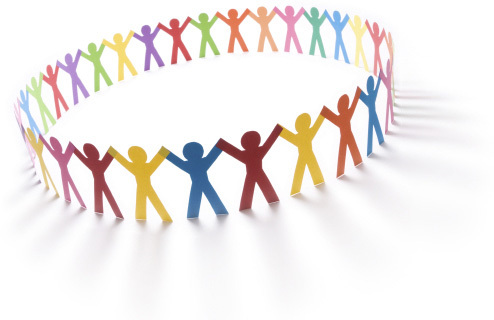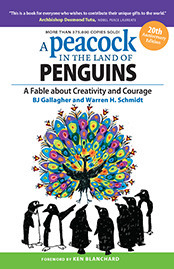While the Gospel of Diversity is being preached in press conferences, public speeches, corporate workshops and seminars across the country, little attention is paid to the conflicting values and faulty assumptions implicit these discussions.

(Photo: Peacock Productions)
First is the assumption that diversity is only about race, gender, and national origin. The major pitfall into which many well-intentioned diversity consultants fall is the categorizing of people on the basis of ethnicity or gender, and then proceeding to perpetuate stereotypes by outlining: "Here's how to communicate with Asians; here's how to motivate Native Americans; this is how to give feedback to Hispanics; women need to be treated like this; African Americans should be coached like that," etc. The assumption is that all people in a given racial or gender group are alike, when in fact, there are as many differences within groups as there are between groups.
Diversity is not just a matter of race and gender -- it's about human uniqueness in all aspects -- values, education, thinking patterns, lifestyles, sexuality, self-expression, personality, work styles, communication preferences, learning styles, family history, life experiences, socioeconomic status, political values, spiritual practices, and more. It is multifaceted and multi-layered. To lump groups of people into broad categories based solely on race and gender is simplistic and superficial, and it does a disservice to true human diversity.
Another assertion often made is that we need diverse (read minorities and women) employees to meet the needs of diverse customers. The assumption here is that "only likes can understand likes." For instance: "only Hispanics can relate to other Hispanics; it takes Asians to know what other Asians want; we must have women who can relate to other women," etc.
See the danger here? It is all too easy to slip into another form of stereotyping and discrimination that says "Women make the best gynecologists; only Japanese can sell goods and services to other Japanese; only African American journalists can write about the problems of the African American community; white audiences will never relate to a Hispanic movie; only Koreans can market products to other Koreans; white authors can never write black screenplays; gerontologists have to be old;" etc. Just ask salespeople, who are often assigned their sales territories according to their own race or gender, and are unable to break out of the assumptions of their bosses who say, "We can't send a salesperson of a different ethnicity to call on that customer because the customer would complain."
Recent history shows us that, on a global level, this assumption that "likes understand likes" is obviously false. The auto industry is a great example. For decades the Big Three in Detroit were making American cars for American consumers. It should have been a recipe for unlimited success. So why was Japan, starting from scratch after WWII, able to gobble up significant market share in the U.S.? Toyota, Honda, Nissan, Mazda were homogeneous Japanese companies that became wildly successful in a foreign country, with consumers very unlike themselves in ethnicity, culture, language, lifestyles, etc. The Japanese electronics firms have a similar track record, as do a number of German companies. How do we account for the past success of Japan and Germany, each on their own continent, who do not value diversity (read ethnicity and gender), do not have women and minorities in leadership positions, and in fact, tout the strength of their homogeneous shared values and culture?
The answer lies in the faulty assumptions we hear made about diversity in the U.S. A more solid, sound assessment of diversity would acknowledge that yes, indeed, characteristics of race and gender do have something to do with how both customers and employees behave. But race and gender are only the tip of the iceberg -- there are many other factors that influence consumer behavior as well as organizational behavior -- all the factors I listed earlier, and many more. We must recognize and acknowledge invisible diversity as well as visible diversity.
In addition to all the differences between human beings, however, there are also many similarities between groups and between individuals. All people want quality goods and services -- we want durability, reliability, honesty and fairness, good value for our money, opportunity to participate, and to have our opinions and feelings acknowledged, etc. In focusing our diversity discussions only on the visible differences of race and gender, we're totally ignoring all the things we have in common! Japan and Germany didn't have to hire a bunch of ethnically diverse people to succeed in the U.S. market -- they simply had to understand human beings and what their potential customers really want in goods and services. As Leon Winter summarized in a Wall Street Journal article some years ago: "Ultimately, the only useful definition for Hispanic consumers -- and everyone else -- is 'human.'"
My hope for the diversity movement, and for society in general, is that the day will come when we will move beyond the limiting categories of race and gender, and look at each other as human beings. We need to develop the skills of listening, empathizing, flexibility, tolerance, patience, compromise, communication, and genuine caring.
We need to balance our discussions of differences with discussions of similarities -- understanding that the desire for quality service and quality products is something we all have in common. Valuing diversity is about suspending judgement, maintaining an attitude of openness and learning, cultivating the ability to listen and understand, and most importantly, it's about building bridges, establishing bonds, and growing mutually beneficial and productive relationships with other human beings who are incredibly complex and multifaceted beings.
BJ Gallagher is a sociologist and coauthor of the diversity classic, "A Peacock in the Land of Penguins: A Fable About Creativity and Courage" (Berrett-Koehler) now published in 23 languages, making it THE best-selling diversity book in the world. A new 20th anniversary edition is being published on January 19, 2015, Martin Luther King Day. www.peacockproductions.com

